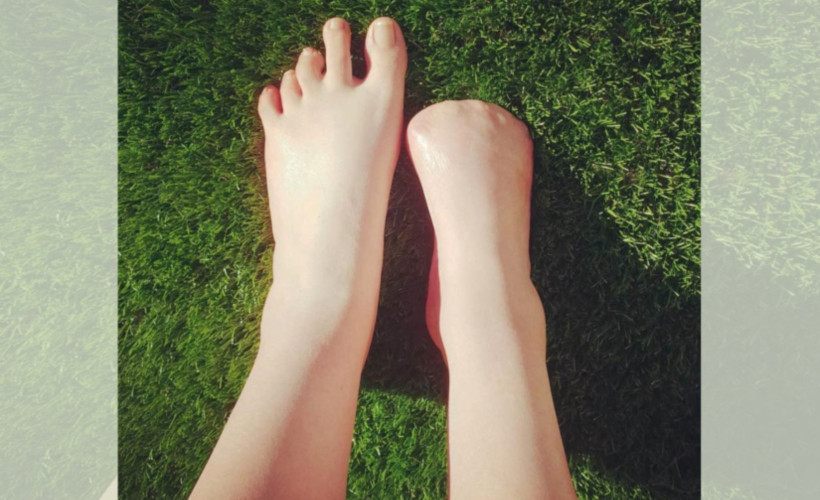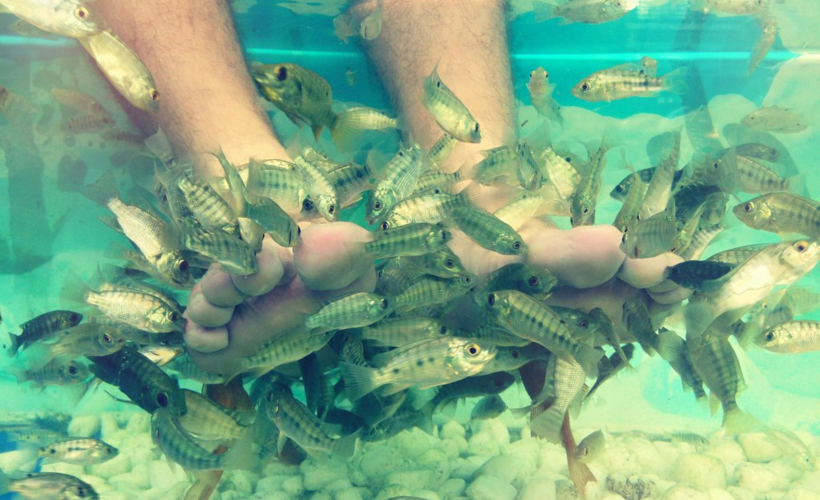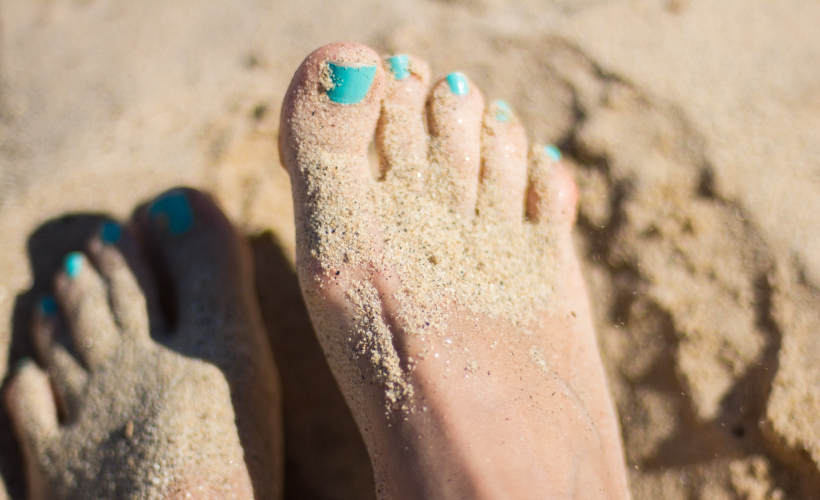Fish spas; it first started out as a weird spa concept but quickly became a novel, fun way to remove dead skin off your feet. Also known as ‘Doctor Fish’, it involves customers dipping their feet into a tub of water with Garra Rufa fishes that eat away dead skin. As the popularity of fish spas boom, the pedicure treatment can now be found worldwide from Malaysia to Mexico. It’s most often found in tourist centres and often popular among curious holidaymakers.
But are fish spas safe?
Losing her toes

In 2017, a 29-year-old Australian had to amputate all five toes on her right foot after contracting a bone-eating infection from a fish spa while she was on holiday in Thailand.
Daily Mail reported that Victoria Curthoys unknowingly caught shewanella from the spa in 2010.
Shewanella is a type of bacteria most often found in water, foods, and sewerage. It rarely causes infection in humans, but if it enters the body, it may lead to ear infections, cellulitis, abscesses, or infect existing wounds.
Curthoys’ prior medical condition is believed to have made her susceptible to contracting the water-borne bacteria. The property manager was born without feeling in her right leg and had undergone many operations on her foot as a child to make it easier for her to walk. When she was 17, she had to amputate half of her big toe on her right foot to kill off an infection she caught by treading on glass. Little did she know she would have to lose the remaining four toes when she dipped her feet into a tub of hungry fish.
“When I was in Thailand I decided to use a fish spa. I thought nothing of it as I’d watched the owner set up the system and it looked very clean, but how wrong I was,” Curthoys told UK media.
“I ended up getting another bone infection in my big toe and it took doctors over a year to figure out what type of bug I had. By the time they’d realised what it was, my entire toe bone had been eaten away and I’d been suffering from sickness the whole time.”

“They eventually decided to take the big toe off completely,” she said of her amputation in 2012.
However, a year of walking without a big toe caused ulcers on the second toe from the pressure placed on it. She noticed a rough callus over the top, but she was unaware that there was another raging infection underneath it.
“This time, the doctors took the second toe and left me with three toes. I was healthy for another two years, I thought I was very lucky to still have my foot and carried on with my life. But then I started to get sick again.”
“Every morning I would be vomiting and constantly had a fever, but X-rays weren’t showing any signs of infections, so the doctors fobbed it off for a long time and they told me it was all in my head.”
“It wasn’t until my podiatrist ordered blood samples that they realised that I did in fact have another bone infection and I had a very high white blood cell count. This was why I was feeling so terrible.”
In November 2016, doctors removed her third and fourth toes, leaving her right foot with only the small toe. Walking with only a little toe was difficult. Curthoys said she kept knocking it and when she walked, all the pressure would go onto the little toe.
“Last year I noticed my small toe wasn’t looking very happy and there was some liquid on my sock, but I couldn’t see any cuts. After a few blood samples and more X-rays, they discovered another bone infection, so they finally took the last toe in November 2017,” she said.
It took some time, but the brave woman has now embraced her toeless right foot. She unabashedly posts photos of it on her Instagram account @terrifically-toeless and even jokes that “all the piggies went to the market”.
“I can honestly say that my foot has never been as healthy as it is now. Now I can put pressure on my foot. At the end of the day I’ve seen people with far worse injuries and life-altering illnesses, so I consider myself lucky,” she said.
On her Instagram, Curthoys notes that her prior medical condition made her susceptible to the infection, so chances are slim for someone else to loose their toe from a fish spa.
A risky fishy treatment

The safety of fish spas has been widely debated about for years. According The Star health columnist Dr YLM, many American and Canadian states have banned fish spas due to cleanliness, health, and safety risks.
“The British Health Protection Agency recently published that fish spa pedicures could spread diseases such as HIV and Hepatitis C, and that patients with a weak immune system, such as those having diabetes or psoriasis, are particularly vulnerable. They however conceded that the risk is extremely low, but could not be completely excluded,” he wrote.
The US Centers for Disease Control and Prevention also said there are concerns how the fish are not changed and that the pedicure tubs cannot be sufficiently cleaned between customers. This can lead to a risk of spreading infection as the fish feeds on multiple customers at the same time.
There are have also been reports of unscrupulous fish spas using fake fish to pass off as Garra Rufa in their treatment. Originally from Turkey, the healing properties of the Garra Rufa as a treatment for psoriasis has been studied by scientists. The most common fake fish is the Chin Chin Fish.

In Thailand where these spas are a popular tourist attraction, The Bangkok Post reported in 2011 that there are 3000 unregistered fish spas operating in Thailand.
It reported Assoc Prof Nopadon Noppakun reportedly saying that fish spa operators who fail to keep hygienic standards are putting their customers at great risk, as both the water and the fish can cause infection.
“The point is whether or not fish spa operators change the spa water regularly… – Let’s just put it this way: when we medical practitioners clean a patient’s wound, we use sterilised medical tools for every patient and we won’t reuse them with the next patient for infection-control reasons,” Dr Nopadon explains.
“A customer steps into the spa water and if, unfortunately, he or she happens to have an infectious wound, the infection can definitely spread to other people who step into that very same spa tank.”



